-
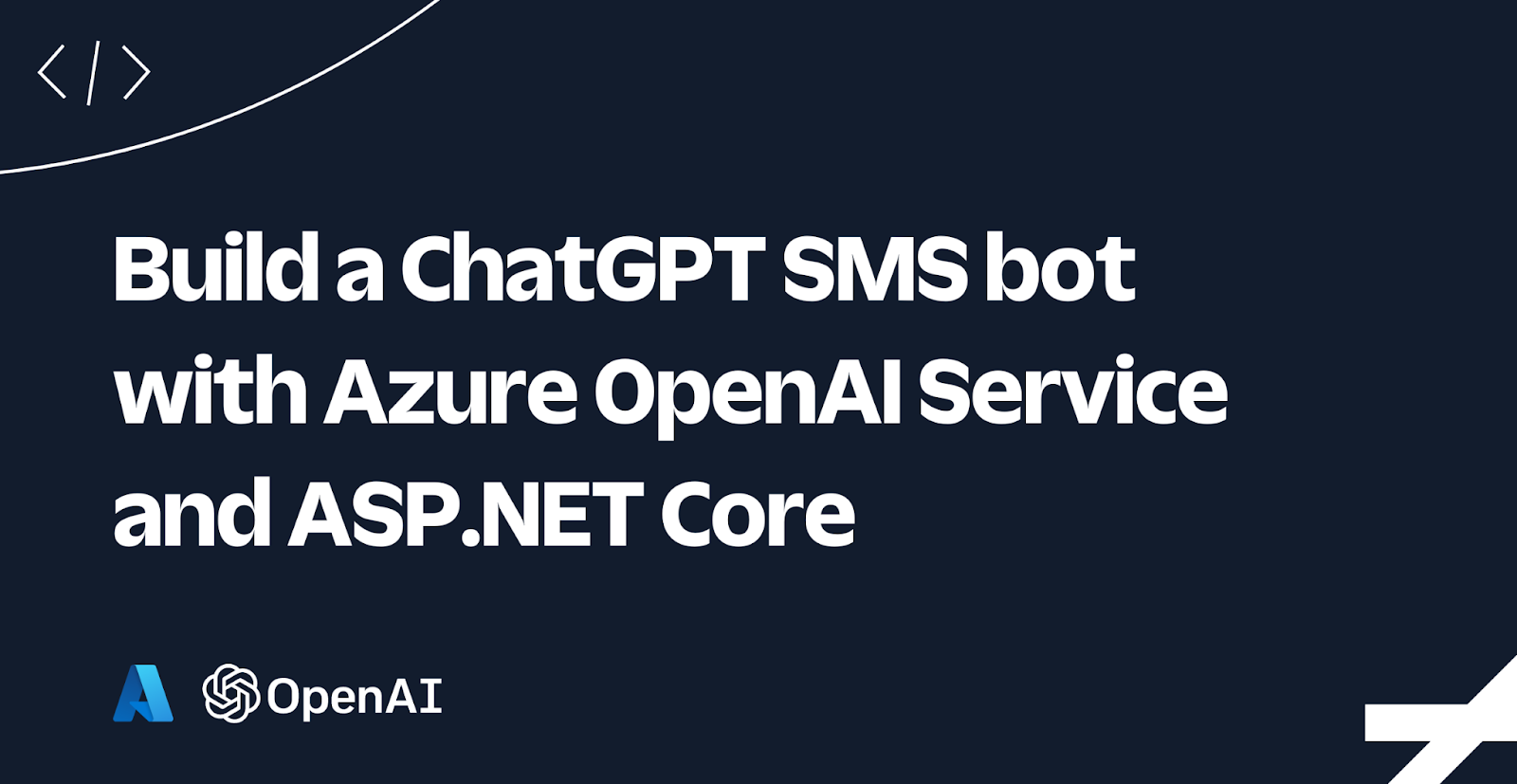 Build a ChatGPT SMS bot with Azure OpenAI Service and ASP.NET CoreNiels Swimberghe
Build a ChatGPT SMS bot with Azure OpenAI Service and ASP.NET CoreNiels Swimberghe -
 How to convert audio to different formats using C# and FFmpegNiels Swimberghe
How to convert audio to different formats using C# and FFmpegNiels Swimberghe -
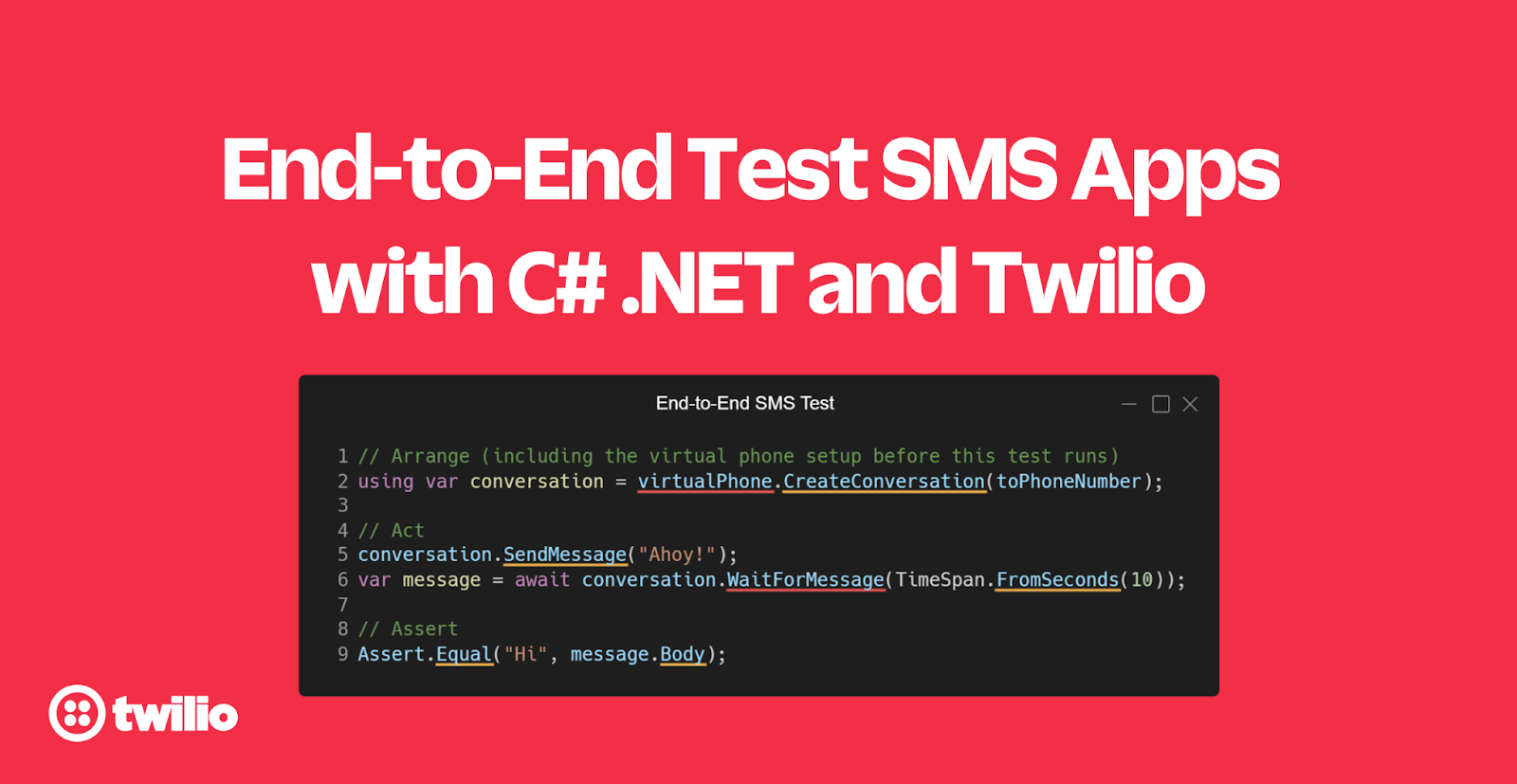 How to End-to-End Test SMS Applications with C# .NET and TwilioNiels Swimberghe
How to End-to-End Test SMS Applications with C# .NET and TwilioNiels Swimberghe -
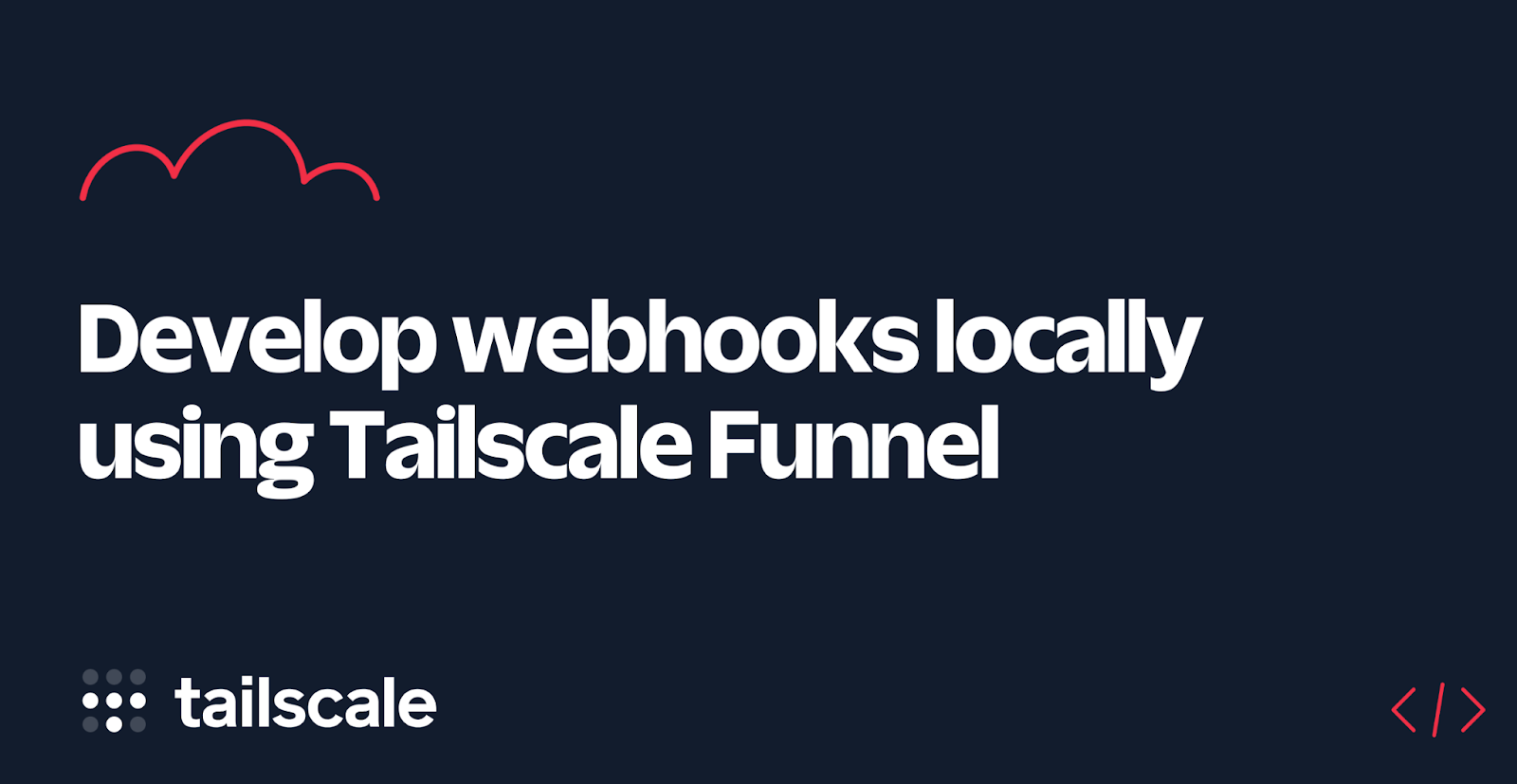 Develop webhooks locally using Tailscale FunnelNiels Swimberghe
Develop webhooks locally using Tailscale FunnelNiels Swimberghe -
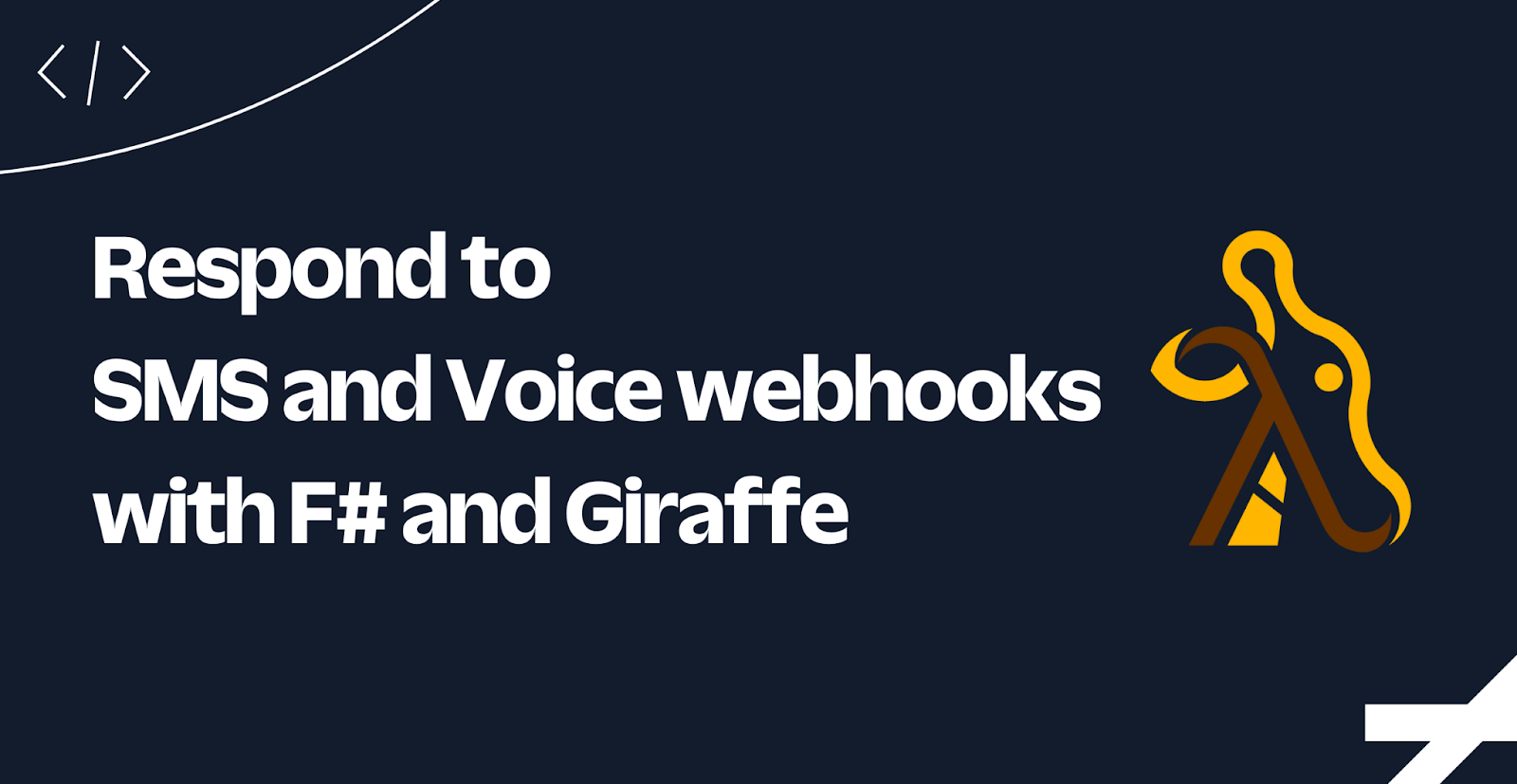 Respond to SMS and Voice webhooks using F# and GiraffeNiels Swimberghe
Respond to SMS and Voice webhooks using F# and GiraffeNiels Swimberghe -
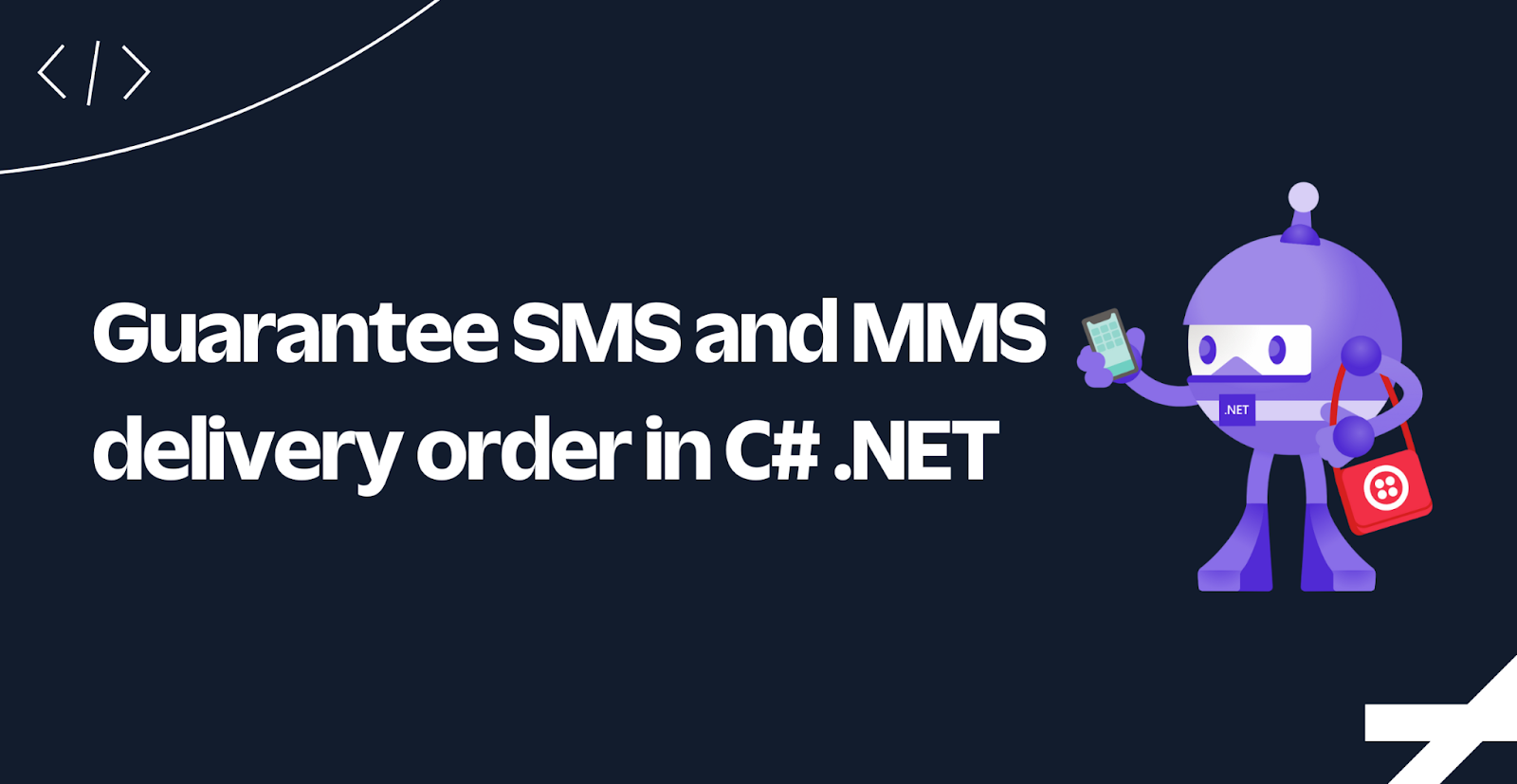 Guarantee SMS and MMS delivery order in C# .NETNiels Swimberghe
Guarantee SMS and MMS delivery order in C# .NETNiels Swimberghe -
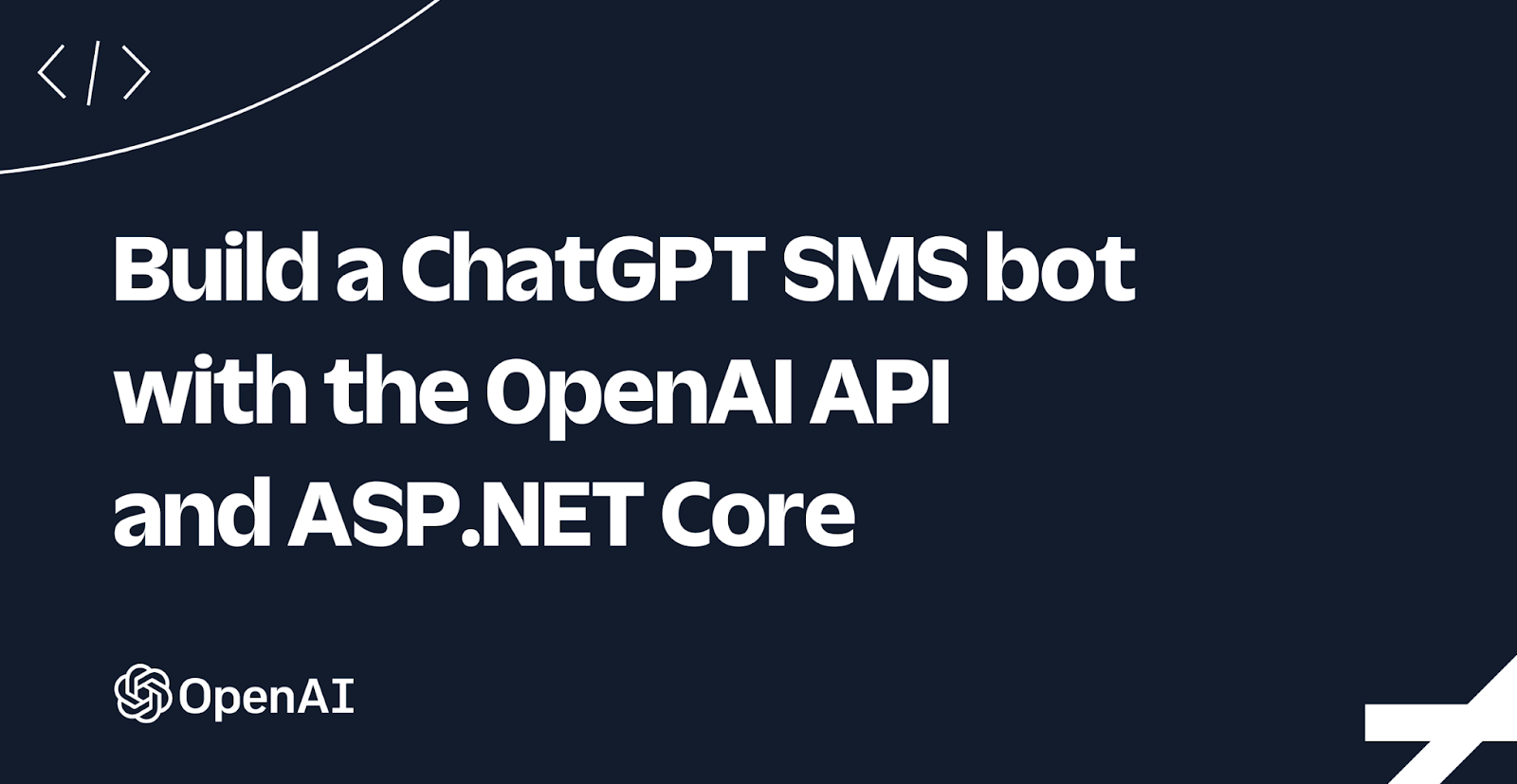 Build a ChatGPT SMS bot with the OpenAI API and ASP.NET CoreNiels Swimberghe
Build a ChatGPT SMS bot with the OpenAI API and ASP.NET CoreNiels Swimberghe -
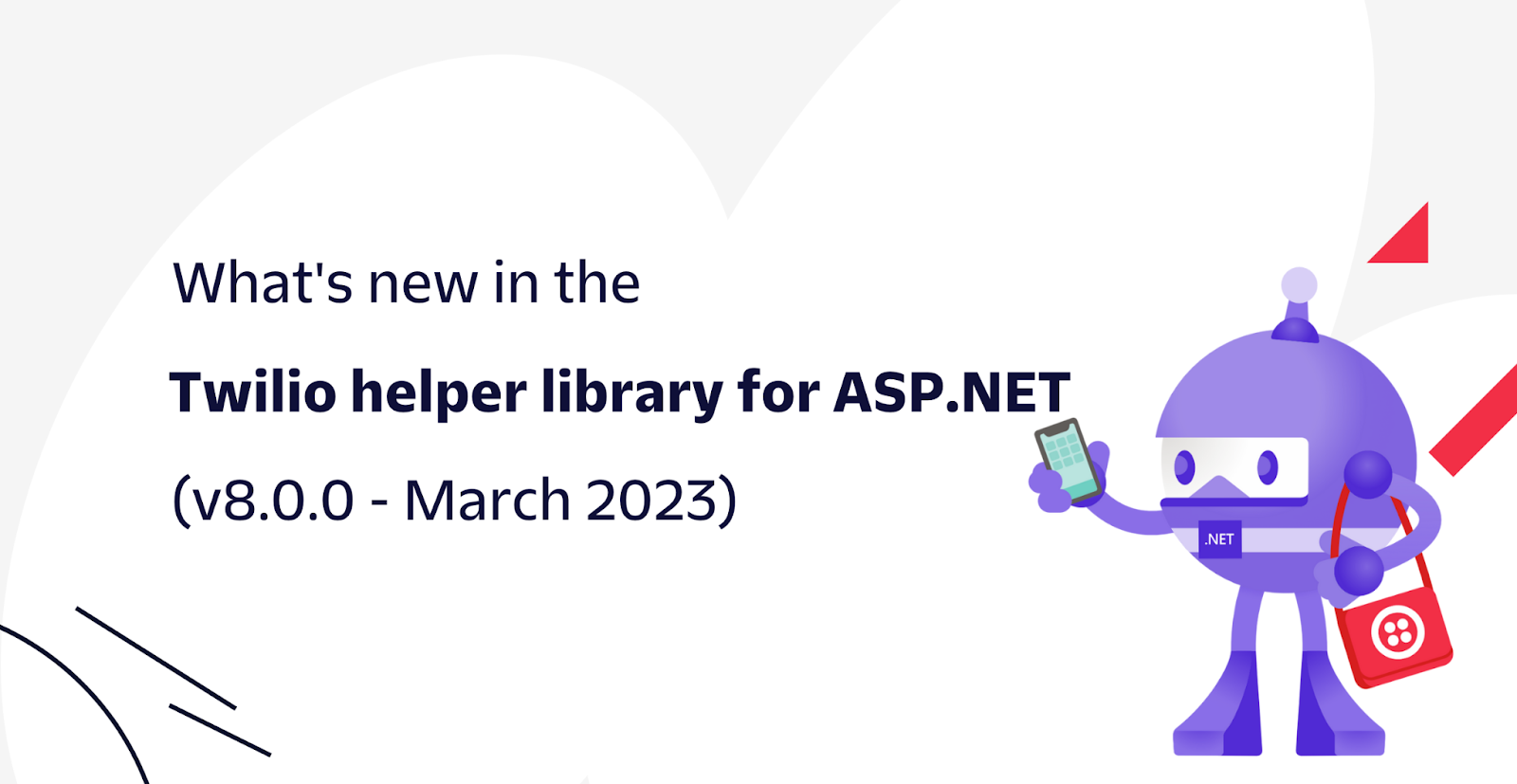 What's new in the Twilio helper library for ASP.NET (v8.0.0 - March 2023)Niels Swimberghe
What's new in the Twilio helper library for ASP.NET (v8.0.0 - March 2023)Niels Swimberghe -
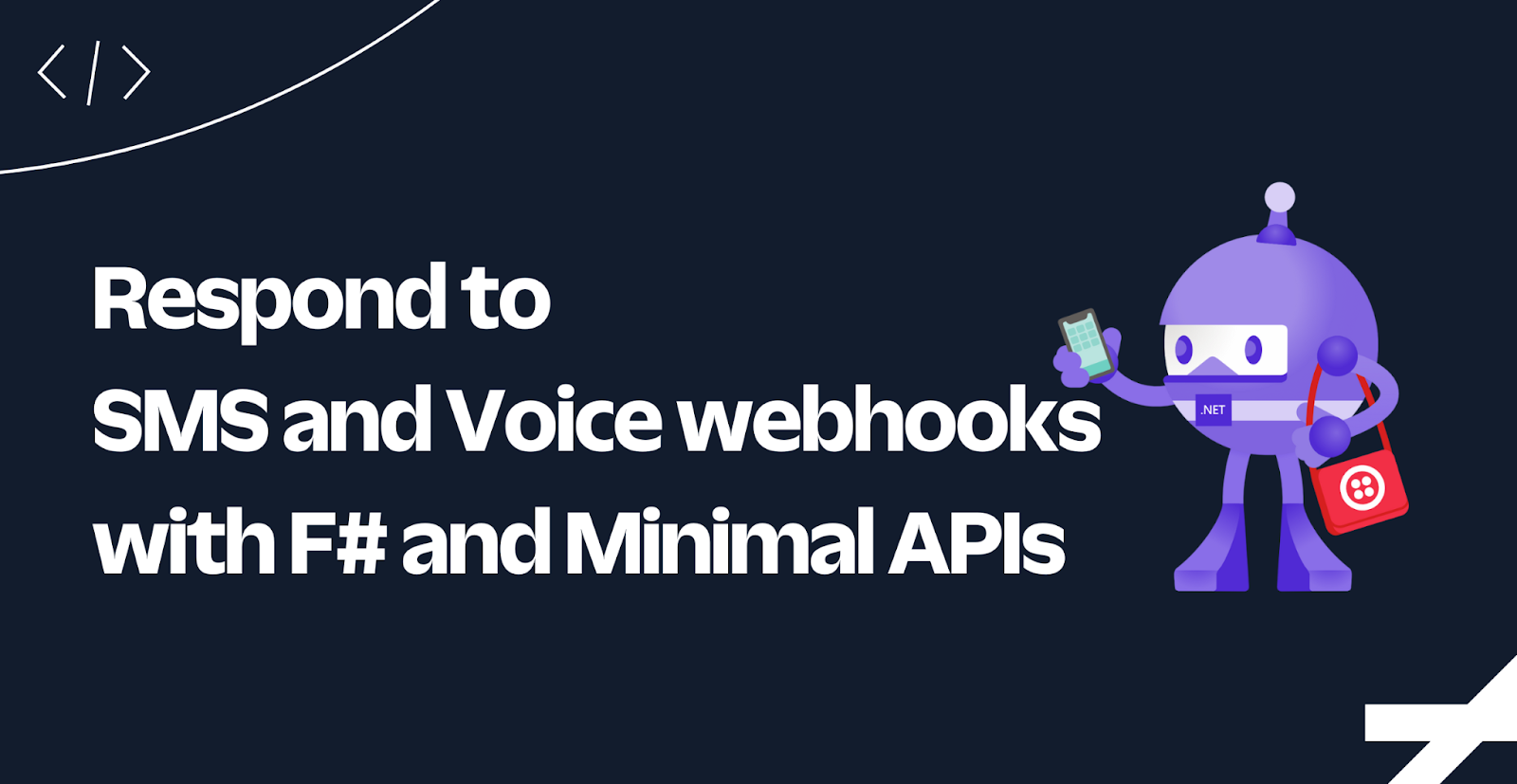 Respond to SMS and Voice webhooks using F# and Minimal APIsNiels Swimberghe
Respond to SMS and Voice webhooks using F# and Minimal APIsNiels Swimberghe
